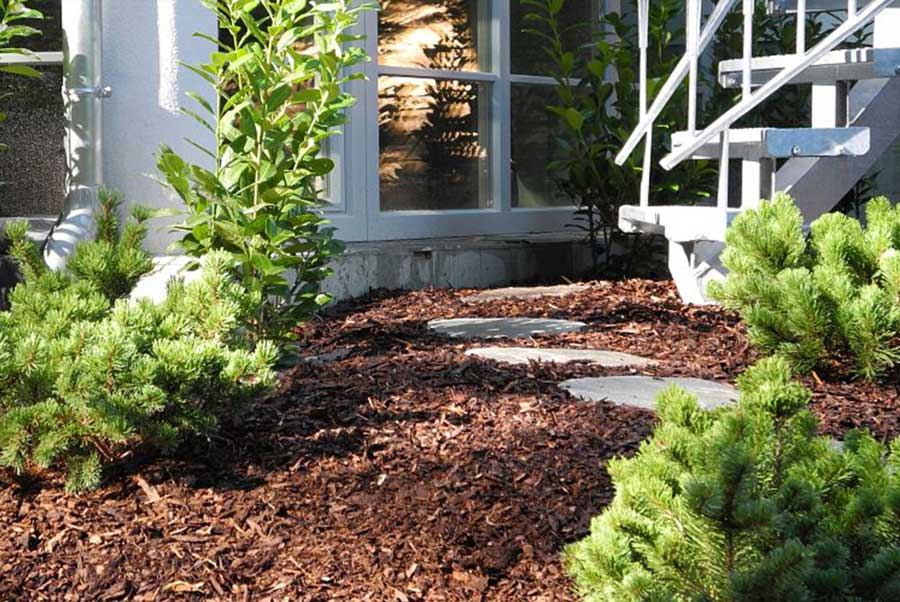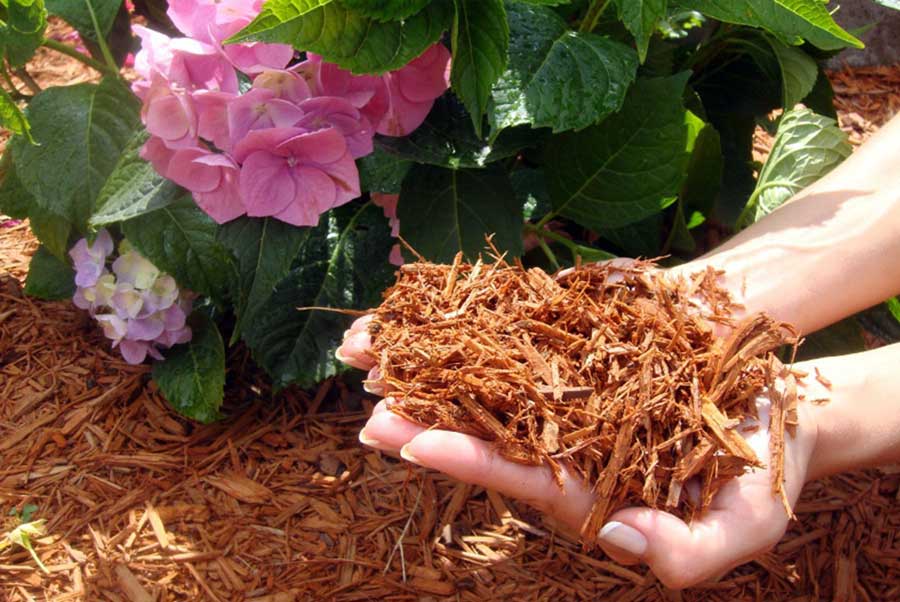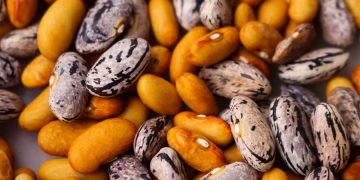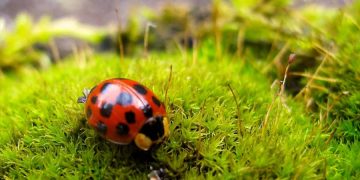There are two cardinal rules for using mulch to combat weeds. First, lay the mulch down on soil that is already weeded, and second, lay down a thick-enough layer to discourage new weeds from coming up through it.
It can take a 4- to 6-inch layer of mulch to completely discourage weeds, although a 2- to 3-inch layer is usually enough in shady spots. If you know that a garden bed is filled with weed seeds or perennial roots, you can use a double-mulching technique to prevent a weed explosion. Set plants in place, water them well, then spread newspaper and top it with mulch.
Mulches that also retains moisture (like wood chips) can slow soil warming. In spring, pull mulch away from perennials and bulbs for faster growth. A wet mulch piled against the stems of flowers and vegetables can cause them to rot; keep mulch about 1 inch away from crowns and stems.
Mulch piled up against woody stems of shrubs and trees can also cause rot and encourages rodents (such as voles and mice) to nest there. Keep deep mulch pulled back about 6 to 12 inches from trunks.
There are two basic kinds of mulch: organic and inorganic. Organic mulches include formerly living material such as chopped leaves, straw, grass clippings, compost, wood chips, shredded bark, sawdust, pine needles, and even paper. Inorganic mulches include black plastic and geotextiles (landscape fabrics).
Both types discourage weeds, but organic mulches also improve the soil as they decompose. Inorganic mulches don’t break down and enrich the soil, but under certain circumstances they’re the mulch of choice. For example, black plastic warms the soil and radiates heat during the night, keeping heat-loving vegetables such as eggplant and cherry tomatoes cozy and vigorous.
You can purchase bags of decorative wood chips or shredded bark from a local garden center to mulch your flower garden and shrub borders. A more inexpensive source of wood chips might be your tree-care company or the utility company. Many community yard waste collection sites offer chipped yard debris or composted grass clippings and fall leaves to residents for free (or for a small fee). Also, consider chipping your Christmas tree instead of tossing it to the curb.
If you have trees on your property, shredding the fallen leaves creates a nutrient-rich mulch for free. You don’t need a special machine either; a lawn mower with a bagger will collect leaves and cut them into the perfect size for mulching.

Spread a wood chip or shredded leaf mulch anywhere on your property, but it looks especially attractive in flower beds, shrub borders, and garden pathways. Of course, it’s right at home in a woodland or shade garden. Wood chips aren’t a great idea for vegetable and annual flower beds, though, since you’ll be digging these beds every year and the chips will get in the way.
Grass clippings are another readily available mulch, although it’s a good idea to return at least some of your grass clippings directly to the lawn as a natural fertilizer. It’s fine to collect grass clippings occasionally to use as mulch, and the nitrogen-rich clippings are an especially good choice for mulching vegetable gardens.
If you have enough compost, it’s fine to use it as a mulch. It will definitely enrich your soil and make your plants happy, but keep in mind that when any kind of mulch is dry, it’s not a hospitable place for plant roots. So you may want to reserve your compost to spread as a thin layer around plants and top it with another mulch, such as chopped leaves. That way the compost will stay moist and biologically active, which will provide maximum benefit for your plants.
Another great mulch for the vegetable garden is straw, salt hay, or weed-free hay. It looks good and has most of the benefits of the other mulches: retaining soil moisture, keeping down weeds, and adding organic matter to the soil when it breaks down. Ensure the hay you use is weed and seed free, or you’ll just be making trouble for your garden. And don’t pile hay or straw up to the stems of vegetables or the trunks of fruit trees or you’ll be inviting slug and rodent damage.
Mulching a vegetable garden with sheets of black plastic film can do wonders. When it’s spread tightly over a smooth soil surface, black plastic will transmit the sun’s heat to the soil beneath, effectively creating a microclimate about three degrees warmer than an unmulched garden. Because the plastic film remains warm and dry, it protects the fruits of vining crops such as strawberries, melons, and cucumbers from rotting and keeps them clean. And of course, the mulch prevents weed growth and retains soil moisture.
Infrared transmitting (IRT) plastics cost more than standard black plastic, but they can result in even higher yields. These plastics warm the soil as well as clear plastic does, but also control weeds as well as black plastic does. In raised bed gardens, lay down a sheet of plastic over the entire bed. Bury it at the edges or weigh the plastic down with rocks. Then punch holes in it for the plants. A bulb planter makes quick work of hole cutting.
Sow seeds or plant transplants in the holes. Because water can’t permeate plastic, rainwater won’t soaking the planting bed. Thus, the ideal watering system for a plastic-covered bed is soaker hoses or drip hoses laid on the soil surface before you put down the plastic.
Don’t use plastic as a mulch under shrubs. Although it keeps out weeds and can be camouflaged with decorative mulch, black plastic destroys the shrubs’ long-term health. Because water and air cannot penetrate the plastic, roots grow very close to the soil surface — sometimes right beneath the plastic — seeking moisture and oxygen. The shallow roots suffer from lack of oxygen and moisture and from extremes of heat and cold. Eventually the plants decline and die. Stick to organic mulches such as shredded leaves, bark, wood chips, or compost under your trees and shrubs.
Geotextiles, also called landscape fabrics, let air and water through to the soil beneath while keeping weeds from coming up. But geotexiles have some of the same drawbacks as black plastic. When exposed to light, they degrade over time, so to make them last longer, you have to cover them with a second mulch (they’re ugly, so you’d want to, anyway).
Many gardeners have discovered that shrub roots grow up into the landscape fabric, creating real problems when you eventually want to remove it. Weeds that germinate in the surface mulch send roots down into the fabric, too, tearing it when you pull them out.














